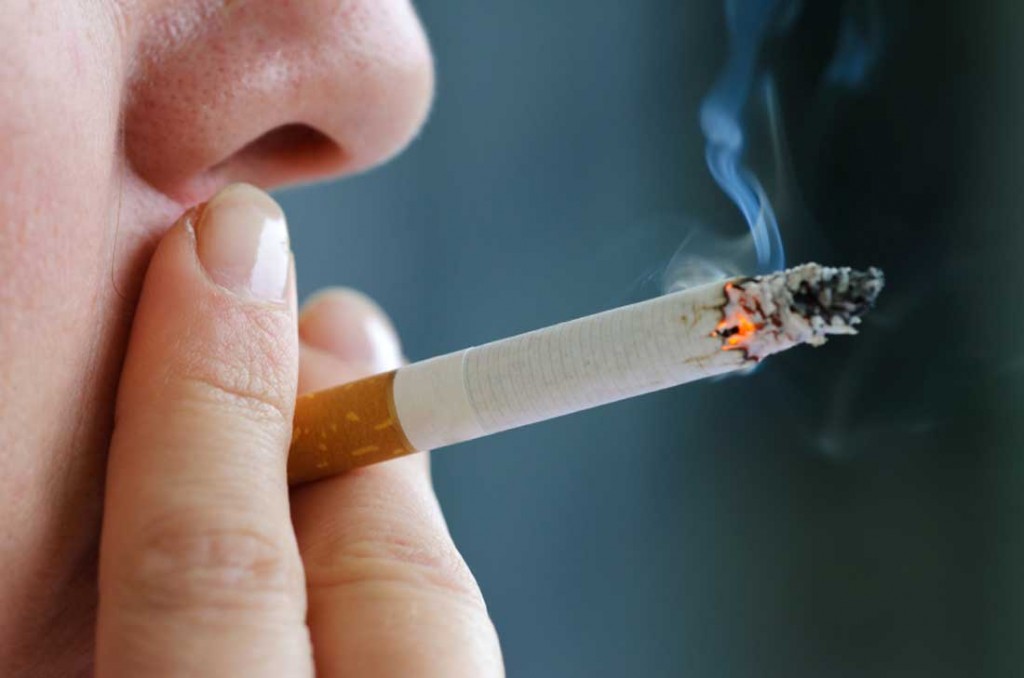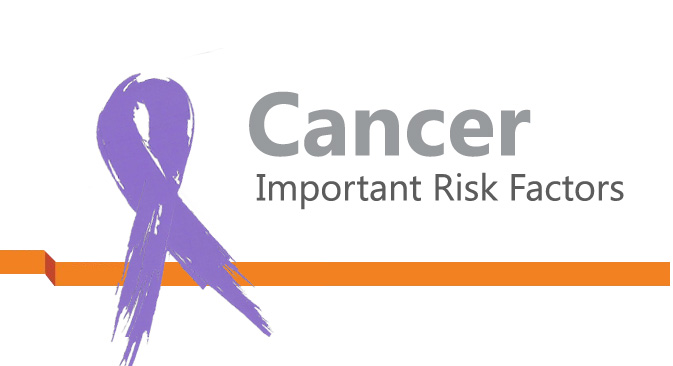Smoking: This is the most important preventable cause of cancer. Smoking is known to predispose to the development cancer of lungs, mouth, throat, gullet, stomach, kidney, urinary bladder, pancreas and the cervix (neck of the womb). Tobacco smoke has over 250 harmful chemicals of which about 70 are known to be carcinogenic (predisposing cancer). The risk will apply to smokers who inhale smoke by smoking cigarettes, cigars and pipes and the risk is proportional to the quantity and the duration of smoking. There is a higher cancer risk in passive smokers (innocent bystanders) who usually happen to be members of the household or workmates of smokers.  Alcohol: Regular alcohol consumption is known to be associated with a higher risk of developing cancers in the liver, mouth, throat, gullet, stomach, lung, colon, rectum and the skin. This is related to the amount and the duration of alcohol consumption and the risk applies to all types of alcoholic beverages.
Alcohol: Regular alcohol consumption is known to be associated with a higher risk of developing cancers in the liver, mouth, throat, gullet, stomach, lung, colon, rectum and the skin. This is related to the amount and the duration of alcohol consumption and the risk applies to all types of alcoholic beverages.  Infections: HIV and AIDS are known to cause various cancers. These include Kaposi sarcoma, lymphoma (tumour that mainly involves lymphatic glands), cancers of the anal canal, cervix, liver , mouth, throat, lung, testes, colon, rectum and various types of skin cancer. Genital infection with human papilloma virus is known to be associated with a higher risk of cancers in the cervix, vagina and the anal canal. This risk is more in individuals who have a concurrent infection of herpes simplex virus. A bacterium that lives in the lining of the stomach called Helicobacter pylori is known to predispose to cancer of the stomach and that of the small bowel. Infections with hepatitis B and C virus predispose to the development of cancer of the liver. An infection caused by an organism called Epstein-Barr virus is known to cause tumours of the lymphatic glands.
Infections: HIV and AIDS are known to cause various cancers. These include Kaposi sarcoma, lymphoma (tumour that mainly involves lymphatic glands), cancers of the anal canal, cervix, liver , mouth, throat, lung, testes, colon, rectum and various types of skin cancer. Genital infection with human papilloma virus is known to be associated with a higher risk of cancers in the cervix, vagina and the anal canal. This risk is more in individuals who have a concurrent infection of herpes simplex virus. A bacterium that lives in the lining of the stomach called Helicobacter pylori is known to predispose to cancer of the stomach and that of the small bowel. Infections with hepatitis B and C virus predispose to the development of cancer of the liver. An infection caused by an organism called Epstein-Barr virus is known to cause tumours of the lymphatic glands.  Excessive exposure to sunlight: Individuals with fair skin are prone to develop different types of skin cancers on repetitive and prolonged exposure to sunlight without protective creams (sun-screens) or when they use ‘tanning beds’. The damage to the skin by sunlight occurs due to ultra violet (UV) light rays.
Excessive exposure to sunlight: Individuals with fair skin are prone to develop different types of skin cancers on repetitive and prolonged exposure to sunlight without protective creams (sun-screens) or when they use ‘tanning beds’. The damage to the skin by sunlight occurs due to ultra violet (UV) light rays.  Prepared by Professor P L Ariyananda Professor P L Ariyananda MBBS (Cey.), MD (Col.), FRCP (Lond.), DCH (Cey.) Professor in Internal Medicine, International Medical University, Malaysia Emeritus Professor in Medicine, University of Ruhuna, Sri Lanka Adjunct Professor, Duke Global health Institute, Duke University, NC, USA Professor Ariyananda has a special interest in medical education, medical toxicology and in respiratory medicine. He has over seventy publications in medical literature in the form of published abstracts and journal articles at both national and international level. He has authored a book in ‘Pictures in Tropical Medicine’ and co-authored a book in ‘Medical Emergencies’ for medical undergraduates and junior doctors.
Prepared by Professor P L Ariyananda Professor P L Ariyananda MBBS (Cey.), MD (Col.), FRCP (Lond.), DCH (Cey.) Professor in Internal Medicine, International Medical University, Malaysia Emeritus Professor in Medicine, University of Ruhuna, Sri Lanka Adjunct Professor, Duke Global health Institute, Duke University, NC, USA Professor Ariyananda has a special interest in medical education, medical toxicology and in respiratory medicine. He has over seventy publications in medical literature in the form of published abstracts and journal articles at both national and international level. He has authored a book in ‘Pictures in Tropical Medicine’ and co-authored a book in ‘Medical Emergencies’ for medical undergraduates and junior doctors.









